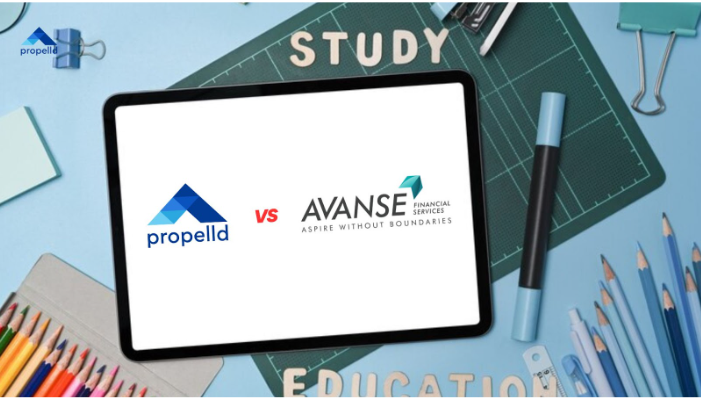Understanding the basics of student loan refinancing can be your first step toward financial freedom and reduced monthly payments.
What Is Student Loan Refinancing?
Student loan refinancing involves replacing an existing student loan with a new one, often at a lower interest rate or with better repayment terms, to reduce monthly payments or overall interest. By starting fresh with a new lender who pays off your old loan, borrowers can potentially save money and secure repayment options that better fit their current financial situation.
How Student Loan Refinance Works
The refinancing process follows an easy system that transfers your debt from one lender to another under the new lender’s conditions.
- Simple Transfer of Debt: Refinancing moves your student loan from your current lender to a new one with improved terms, usually taking 2–6 weeks to complete. Keep making payments on your existing loan until the transfer is confirmed.
- Compare and Apply: The process involves comparing lender offers, checking eligibility, submitting documents, and finalizing the new agreement while considering interest rates, fees, repayment terms, and lender reputation.
- Lender Review: Lenders evaluate your credit history, income, debt-to-income ratio, and employment to ensure the new loan terms are sustainable and fit your financial situation.
Types of Student Loan Refinancing
Different refinancing options cater to various financial goals and circumstances, each offering unique advantages for borrowers.
- Rate-and-Term Refinance – Lets you adjust your interest rate or loan term to save money over time. Your principal stays the same, making it ideal for lowering overall costs. It’s the most common type of student loan refinancing.
- Cash-Out Refinance – Increases your loan to access extra cash for major expenses like home improvements or business needs. This option does raise your total debt. It’s less common but useful for specific financial goals.
- Cash-In Refinance – Allows you to pay a lump sum toward your loan to reduce debt, lower rates, or decrease monthly payments. Perfect for using windfalls strategically. It can improve your eligibility for better loan terms.
- Streamline Refinance – A fast, low-paperwork option for borrowers with strong credit. Often completed in 1–2 weeks, it’s ideal for taking advantage of lower rates quickly. It’s best for those seeking a simple, hassle-free process.
Steps to Refinance Student Loans
Following a systematic approach ensures you make informed decisions throughout the refinancing process.
Step 1: Review your current student loan terms and remaining balance to establish a baseline for comparison. Gather all loan documents and create a comprehensive overview of your existing debt, including interest rates, monthly payments, remaining balances, and any special benefits or protections.
Step 2: Check your credit score and eligibility, as these factors significantly influence the terms you'll be offered. Most lenders require a credit score of at least 650 for refinancing approval, though the best rates typically go to borrowers with scores above 720.
Step 3: Research and compare lenders offering refinance loans, paying attention to interest rates, fees, repayment terms, and customer service ratings. Consider both traditional banks and online lenders, as each may offer different advantages depending on your specific situation.
Step 4: Prepare documentation including income proof, loan details, and tax returns as needed. Most lenders require recent pay stubs, tax returns from the past two years, bank statements, and complete information about your existing student loans.
Step 5: Apply and finalize the loan, then start repaying under new terms. Once approved, carefully review all loan documents before signing, and ensure you understand your new payment schedule and any changes to your loan terms.
Pros and Cons of Refinancing
Understanding both the advantages and potential drawbacks helps you make an informed refinancing decision.
When Is the Best Time to Refinance?
A well planned strategic timing can maximize the benefits of refinancing while minimizing potential drawbacks.
Consider refinancing in these situations:
- When you can get a lower interest rate – Typically, a rate at least 0.5–1% lower than your current loan makes refinancing worthwhile, helping you save on interest over time.
- When your financial profile has improved – If your credit score, income, or overall financial situation has strengthened since taking out your original loan, you may qualify for better terms and lower monthly payments.
- When you need repayment flexibility – Refinancing allows you to adjust your loan term to match your current goals: extend the term to reduce monthly payments or shorten it to save on total interest.
Refinancing student loans can be a powerful tool to optimize your financial future, but it requires careful evaluation of your unique circumstances and long-term goals. Consider factors like interest rates, repayment tenure, and potential loss of benefits before making a move.
Conduct thorough research, compare multiple lenders, and ensure the terms truly enhance your financial well-being. For expert guidance and tailored solutions, explore options with Propelld, helping you make informed decisions that align with your broader financial strategy.













.svg)